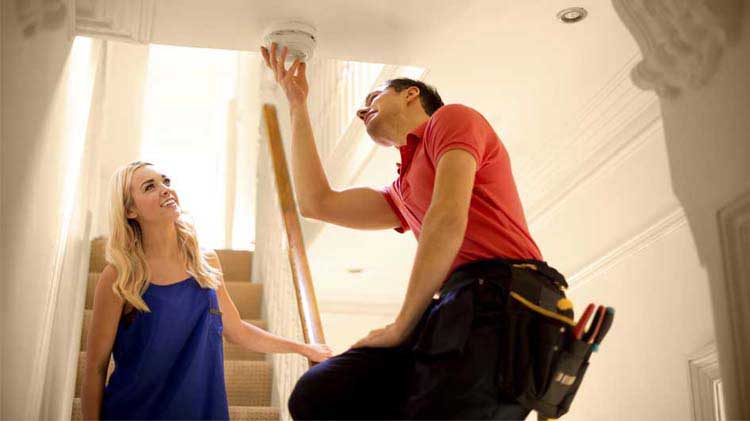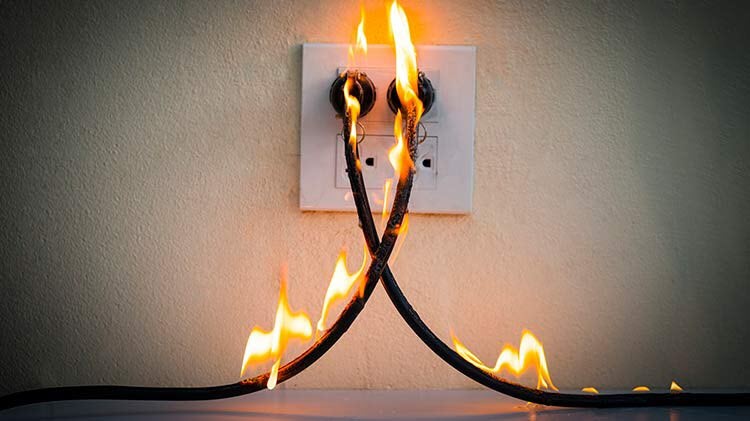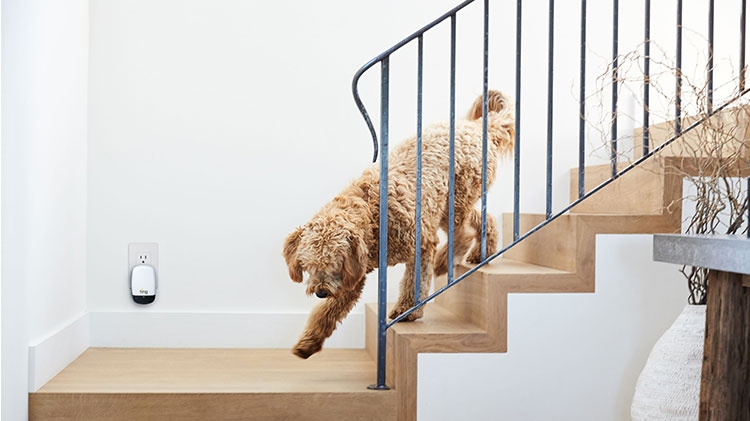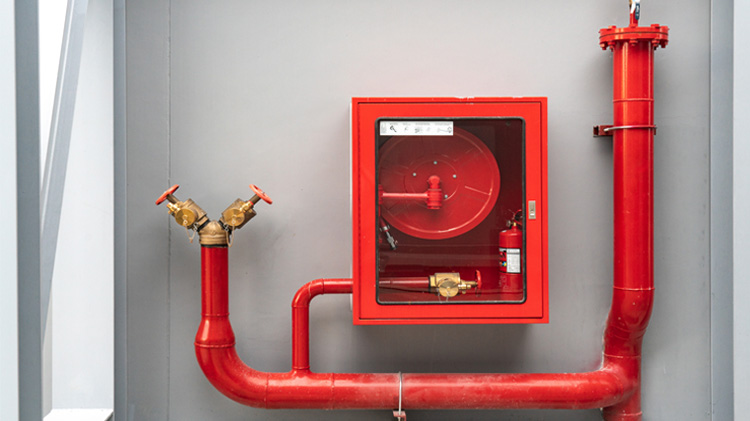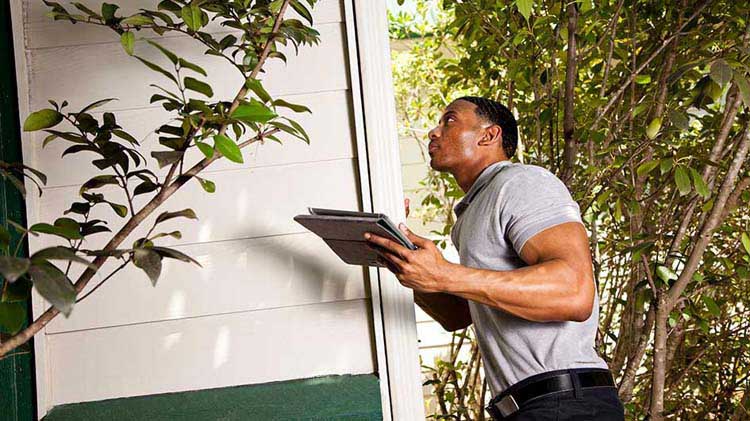Fire safety equipment to have at home
Every home should work to be prepared with fire safety equipment to help in case of an emergency.
Fire safety equipment and supplies are important additions to a home fire safety plan. According to the National Fire Protection Association (NFPA), there were 3,670 civilian fire deaths in 2023, and the death rate per 1,000 home structure fires is approximately 60% lower in homes with working smoke alarms. So that you can be better prepared to help limit damage or injury if a fire happens, consider keeping the following equipment handy.
Fire extinguishers
Fire extinguishers are the primary line of defense when a fire starts to spread. With swift action, they may be able to help subdue a fire before it gets out of hand. However, it’s important to note that while it can be a great tool in some cases, if the fire doesn’t die down immediately after use, evacuate and call 911 once you are out safely.
Types of fire extinguishers
Depending on the cause of the fire, there are several types of extinguishers to choose from and each has various uses. The common types of home fire extinguishers include:
- Water extinguishers — these extinguishers use water as their primary liquid and are typically used to combat Class A fires, which contain common combustible materials like paper, cloth, wood and some plastics.
- Film-forming foam — with a foam material as opposed to a liquid or powder, these extinguishers can also be used against common material fires but are particularly suited to putting out Class B fires with flammable liquids like oils, alcohols and grease.
- Carbon dioxide — extinguishers that contain carbon dioxide are used for Class C fires that might happen around fragile and expensive electronic equipment. The benefit is that this substance doesn’t leave a residue after use and it doesn’t create shock hazards the way a water extinguisher might, for example.
- Class A-B-C fire extinguisher — the A-B-C extinguisher can do the work of a Class A, B or C fire extinguisher. It is typically the most versatile of the home options and is usually sold at most home improvement stores.
- Dry powder — Class D fires, which involve flammable metals such as titanium, sodium, zirconium or magnesium, may require a dry powder extinguisher.
- Element fire extinguisher — this is a small handheld fire extinguisher that is highly portable and can be kept in a car or carried when needed. It is typically used for fighting fires on the molecular level. Its gas contents chemically interrupt the chain of combustion, effectively extinguishing a fire without making a mess or removing surrounding oxygen.
How to use a fire extinguisher
Use a portable fire extinguisher when the fire is confined to a small area, is not growing and the room is not full of smoke. When these conditions are not met, everyone should quickly exit the home instead of trying to put out the fire, as it can spread quickly.
To use a fire extinguisher properly, the NFPA recommends remembering the acronym PASS:
- Pull the pin
- Aim low
- Squeeze the lever
- Sweep the nozzle
Prior to use, it can be important that you learn the proper techniques and closely follow manufacturer guidelines for the particular type and model of fire extinguisher acquired.
Smoke detectors
Smoke detectors sense when smoke is present in the home and alerts occupants so they have a chance to put out the fire or evacuate. A home without working smoke detectors puts its occupants at risk. Between 2018 and 2022, nearly three out of five home fire deaths were caused by fires in properties with no smoke alarms, or smoke alarms that failed to operate.
Types of smoke detectors
There are three kinds of smoke detectors: photoelectric, ionization and a combination of the two called a dual sensor. Photoelectric smoke detectors are better at picking up slow-building, smoldering fires, like one resulting from a lit cigarette. On the other hand, ionization smoke detectors quickly sense sudden combustible fires with high flames, like a grease fire.
For more comprehensive protection and safety, opt for the dual-sensor smoke alarm. Since many fires and their types are unpredictable, having both kinds of detectors can allow for early-warning reaction time and an opportunity for action.
Where to place smoke detectors
Many fatal fires happen late at night or early morning, while most people are asleep. For this reason, the NFPA recommends placing smoke detectors in every bedroom and on every floor, including the basement.
Help prevent false alarms by placing smoke detectors away from the stove in a kitchen. If someone in your home is deaf or hard of hearing, consider a detector that also combines flashing lights with its alarm sound. If installing a smoke detector on a wall, remember to place it 4-12 inches away from the ceiling to allow smoke to properly reach it as it rises.
Smoke detector battery and chirps
A smoke detector constantly filters the air in a home 24 hours a day, seven days a week, so maintenance is crucial. Most smoke detectors come equipped with a "chirping" alert to let you know the battery is low, but you may want to stick to a rule of changing batteries annually, even if it's been quiet all year. It can also be good practice to press the test button on each alarm once a month to check for technical faults in the battery or device.
It's recommended that you fully replace old detectors every 10 years. This also allows for the opportunity to update to new technology or meet regulations that may have changed since the smoke detectors were first installed.
Carbon monoxide detectors
Carbon monoxide is an odorless, colorless and tasteless gas and is thereby undetectable by human senses. Despite being hidden, the danger is very real, and carbon monoxide can be lethal when inhaled.
In addition to smoke detectors, carbon monoxide detectors are especially important if your home uses natural gas for cooking, heating or has an attached garage. Additionally, having carbon monoxide detectors properly placed around your home and understanding their full abilities is key.
- If you have a smart home system, consider linking your carbon monoxide detectors so you can receive smartphone alerts if carbon monoxide is detected.
- Some manufacturers of carbon monoxide detectors offer combination or three-in-one detectors to alert you when carbon monoxide or an explosive gas (like natural gas or propane) is detected. Many home natural gas detectors or explosive gas detectors will require being plugged into an electrical outlet and may have a battery backup.
- Try to keep the detectors away from cooking or heating appliances and high humidity locations, like bathrooms and kitchens, as moisture can sometimes trigger faulty readings.
- It’s recommended to replace batteries in carbon monoxide detectors at least once a year (or sooner if it “chirps” to let you know the battery is low). It’s also recommended that older carbon monoxide detectors be replaced every five years.
- Install a carbon monoxide detector on each level of the home, in or near each sleeping area and near attached garages.
If your detector goes off, leave the house immediately, check everyone (including pets) for signs of poisoning, call 911 and don’t reenter your home until authorities have cleared it.
Carbon monoxide exposure and symptoms
Dangerous levels of carbon monoxide can happen from using improperly vented, obstructed or malfunctioning gas, coal, wood or oil-burning appliances in or around a home such as:
- Vehicles running in a confined space
- Furnaces
- Fireplaces
- Cooking appliances
- Clothes dryers
- Woodburning stoves
- Space heaters
- Grills
- Nearby high-traffic roads or factories emitting carbon monoxide
- Using malfunctioning or improperly maintained gas-powered equipment
- Lawn mowers
- Chainsaws
- Generators
- Smoking or breathing in secondhand smoke
What makes carbon monoxide poisoning particularly dangerous is that early onset symptoms may be mistaken as having the common cold or flu. Unless carbon monoxide is detected by a carbon monoxide detector, a person may not realize they have carbon monoxide poisoning until it’s too late.
Symptom severity depends on how much carbon monoxide is inhaled and for how long. Symptoms of carbon monoxide poisoning may include:
- Headache
- Fatigue
- Shortness of breath
- Nausea
- Dizziness
- Confusion
- Blurred vision
- Vomiting
- Loss of muscle coordination
- Unconsciousness
Other home safety equipment
- Home fire sprinkler systems — sprinklers can detect fires and help extinguish them. Sprinkler systems may help limit the amount of harmful smoke from reaching residents when evacuating. Additionally, these may help prevent significant property damage when no one is home to notify the fire department.
- Fire escape ladders — multi-story homes should have a fire escape ladder kept on the top floor to evacuate if the stairway is blocked by fire or debris. Take precautions when using it and remember to match the length of the ladder with the height you would need to descend.
- Fireplace screens — keep screens on fireplaces to help prevent ash or sparks from reaching nearby flammable materials like carpets or drapes. Monitor the screen for holes or damage and replace it as necessary. You may want to consider a yearly chimney clean as well.
- Fire blankets — a fire blanket may serve as an alternative to an extinguisher and similarly works by smothering small fires to help prevent them from using oxygen to grow.
- Stovetop fire suppression units — when installed in a stovetop, the units are built to detect and extinguish fires automatically before they spread.
- Fireproof boxes — these are used to help protect important documents, like passports and titles, from fire or theft. Look for safes rated to withstand at least 1,000 degrees Fahrenheit, and store it in a secure, hidden location.
- Emergency kits — the type of emergency kit needed depends on the type of weather in your region. Consider including general protective gear like gloves, safety goggles, hearing protection, sunscreen, insect repellant, dust masks and other items.
Fire evacuation plan
Once you have the right equipment, consider developing a comprehensive fire evacuation plan in case of emergency. Remember, the primary tool against a home fire is a safe exit route.
If you’ve just experienced a home fire, check out our tips on what to do next.
